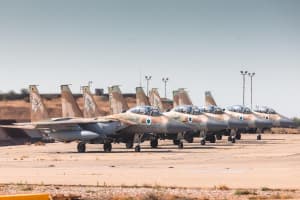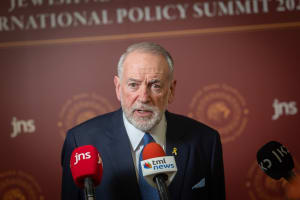With Gaza ceasefire looking increasingly fragile, Israel and Hamas prepare to resume fighting
US envoy Witkoff expected in Middle East in attempt to preserve ceasefire momentum

With the Gaza ceasefire increasingly in doubt, as Israel and Hamas accuse each other of violating the agreement, both the Israel Defense Forces (IDF) and Hamas appear to be preparing for a renewal of hostilities.
Approximately two weeks ago, the IDF began to reinforce units in the southern border area, adding regular battalions to the forces already there, while also calling up reserve units and suspending leave for on-duty soldiers in the IDF Southern Command.
On Sunday, Israel Defense Forces announced its decision to increase the operational readiness in the area surrounding the Gaza Strip, without changing any of the Home Front Command guidelines.
While speaking to graduates of an IDF officers’ course on Sunday, both Prime Minister Benjamin Netanyahu and Defense Minister Israel Katz stated that Israel is preparing for a return to fighting if the ceasefire agreement falls apart.
On Saturday, Israel suspended the release of Palestinian terror prisoners over the humiliating hostage release ceremonies and the decision by Hamas to transfer the body of an unidentified woman, instead of Shiri Bibas.
This decision was made despite the Israeli security warning that it could potentially lead to a collapse of the ceasefire.
The roughly month-long pause in fighting following the hostage-ceasefire agreement has also provided the opportunity for Hamas to move thousands of its operatives back into the northern Gaza Strip.
When the IDF withdrew from the Netzarim Corridor, as part of the terms of the agreement, a combined US-Arab group was supposed to inspect vehicles heading north, to prevent the transfer of weapons by the terror group back into the northern Gaza Strip.
Several hundred thousand Gaza residents made their way back to the northern Strip following the start of the ceasefire, but tens of thousands later returned to the south after discovering the extent of the damage, including the near-total destruction of entire neighborhoods, lack of water and electricity infrastructure, and the lack of any reconstruction efforts.
The Israeli military assesses that Hamas has begun to form new military frameworks with the returning fighters, although not at the same level as before the war, according to Ynet News.
It is also believed that Hamas is actively preparing to resume fighting with the entry of new drones, setting up new booby traps, and possibly cleaning out tunnels not discovered by Israeli forces in the previous military campaign.
The defense establishment believes that, based on forces present in the hostage release ceremonies, Hamas did not commit all its resources to the war in the previous round of fighting. The terror group has also been recruiting new fighters even before the ceasefire agreement.
In recent days, Hamas began resuming control of municipal services, setting up checkpoints and engaging in other policing efforts. The terror group continues to take control of the majority of humanitarian aid entering the Strip, often selling it in markets it controls, in order to replenish funds.
“Every day of the ceasefire helps Hamas move operatives and commanders and issue instructions,” IDF officials said. “It has significant gaps in combat equipment, personnel, and command and control due to IDF operations and the lack of new resources. But the past month has proven there’s still much work to be done to defeat Hamas.”
The IDF leadership also believes that the Gaza proposal of U.S. President Donald Trump does not provide a viable means of evacuating the Gaza civilian population, should fighting resume, as no countries have yet expressed a willingness to absorb significant numbers of Palestinian evacuees, nor is Hamas likely to allow civilians to easily leave.
However, the military believes the idea is still worth pursuing, due to the effect it could have on Hamas’ control of the Gaza Strip.
A senior security official told Ynet that “there are more obstacles and problems than practical chances of this getting off the ground. But if we succeed in a pilot, say with a few hundred Gazans leaving, if they manage to bypass Hamas checkpoints – which naturally opposes this – then it could encourage others to leave too, perhaps with a promise that they’ll be allowed to return to Gaza in the future.”
Meanwhile, the United States appears to be actively working to keep the ceasefire deal on track.
Trump's Middle East envoy, Steve Witkoff, is expected to arrive in the region as early as Wednesday to begin talks about extending the first phase of the ceasefire agreement while also encouraging negotiations regarding the second phase.
Arab nations are also attempting to gather unified support for a counter-proposal to Trump's plan, which would preserve Gaza as a Palestinian territory, and see reconstruction efforts funded by an Arab coalition that would also help establish governance.

The All Israel News Staff is a team of journalists in Israel.
You might also like to read this:
















